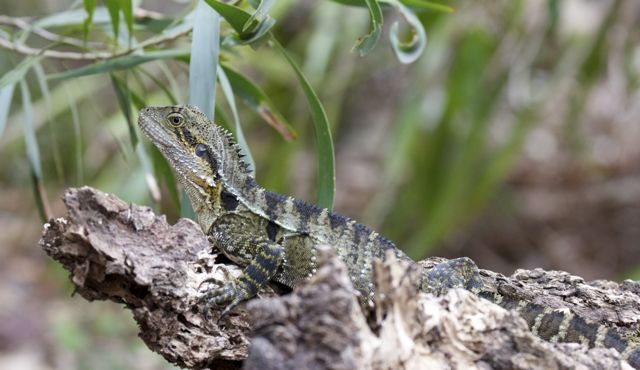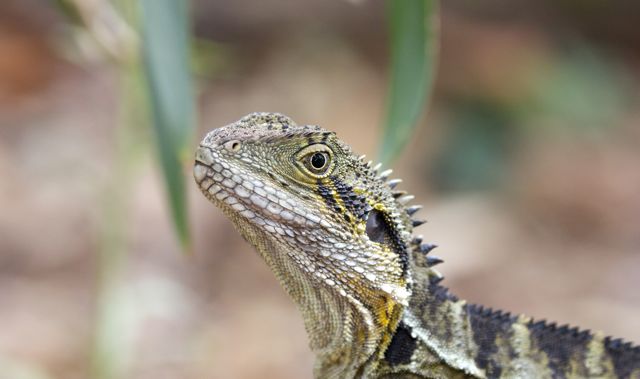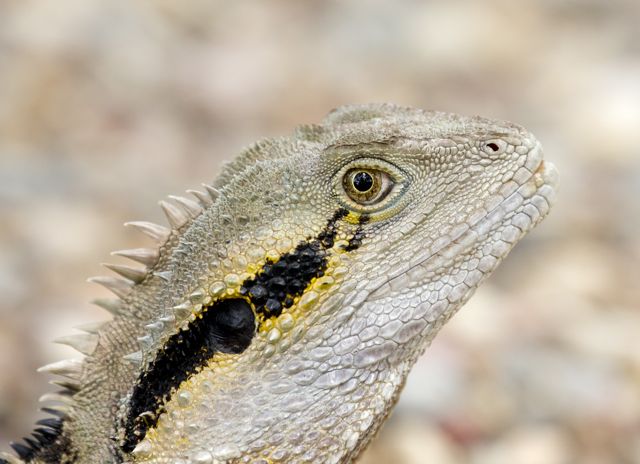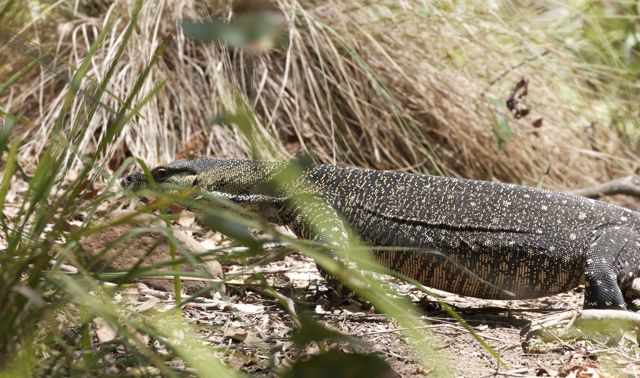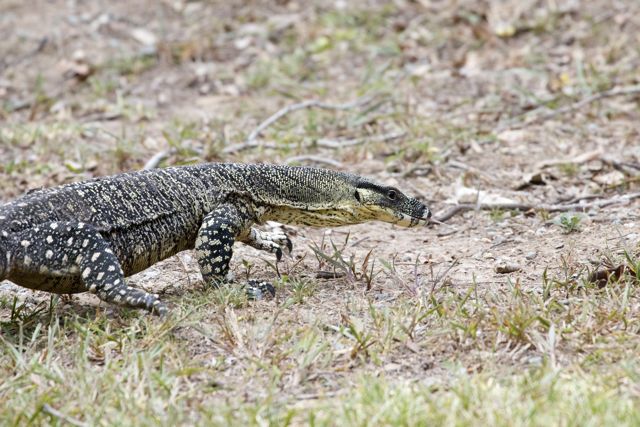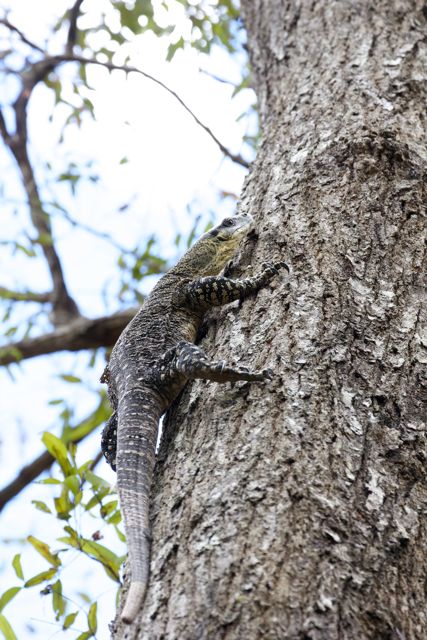Dragons and parasites
/Brush Turkey chick, Brisbane, QLD
The itinerary for February included a few days in Brisbane, where it was lizards who stole the show. Australian Water Dragons (Intellagama lesueurii) are common around the Lone Pine Koala Sanctuary, and are brilliant posers. They are quite accustomed to people shoving cameras in their face and sit perfectly still as you get your paparazzi moment. There were also a number of precocious and independent Brush Turkey chicks (Alectura lathami) running about the place, although they rarely sit still long enough to even capture in frame!
A day trip to Mt Tamborine resulted in some excellent Lace Monitor (Varanus varius) spotting. Telltale rustles in a dry creek bed gave the first one away, but soon we were spotting them up in trees and wandering around in the undergrowth beside the picnic area. They ranged in size from under a metre, to well over two. It is always amazing to see such prehistoric looking creatures stroll around, particularly given the speed with which they can run when inspired to do so. They can also climb a tree with the same speed and fluidity as walking on a horizontal surface!
Back in Alice, the January rain is still bringing waves of Golden Drummer Cicadas (Thopha colorata) to the surface. They still sing day and night unless the temperature drops below some threshold I have yet to identify. But the sudden excess of food has drawn a new temporary resident to the block. Channel-billed Cuckoos (Scythrops novaehollandiae).
An unfamiliar and very loud call first alerted me to their presence. Harsh and repetitive, the new sound had me searching the skies and the surrounding trees, but I could not find the newcomer. All I could guess, based on the volume, was that it was likely a very large bird. My extremely poor description of the call was no help to Chris, who immediately identified it the moment he heard them calling himself.
For days they eluded me. Calling sporadically all through the day and often at night as well, they were clearly moving into the immediate area. Finally, I managed a fleeting glimpse of a large grey bird being seen off by angry Magpie-larks. It took about another week and more rain before I found one sitting in the large gum tree behind the house. It was much larger that I had originally thought, now that I could see it properly. Big, chunky and ancient looking bird with a massive bill, it sat there watching me try to take photos of it.
Channel-bill Cuckoo with cicada, Alice Springs, NT
For such a large bird, they can be amazingly sneaky. They often take off out of a tree and fly away without a sound. I’ve taken my eyes off one for a moment, then turned back to realise it is long gone. And yet, they make such an effort to be noticed on other occasions, calling loudly and harshly, jumping about the larger branches of the gums as though to gain the attention of all other birds in the area.
In fact, this is pretty much exactly what they are doing. Cuckoos are brood parasites. This means that rather than building their own nest and rearing their own chicks, they lay an egg in another bird’s nest and leave the poor unsuspecting parents to raise the adopted chick. The most likely targets for these Channel-billed Cuckoos are the crows. But the smaller birds like the Magpie-larks and Ringnecks are very suspicious and wary of the huge birds and will chase them off regularly.
Channel-bill Cuckoo scanning the surroundings, Alice Springs, NT
So, in sneaky mode, the Channel-bills scope out the area. Scanning the skies and trees for likely targets, a breeding pair of birds with a nest nearby. Once they’ve found a nest, the male switches to broadcast mode and advertises his location as obviously as he can. Defensive birds swoop and dive on him until they drive him off his perch, and chase him well into the distance. The owners of the nest having been drawn away, the female Channel-bill slips into the nest and lays her own egg. Chris tells me that cuckoos have the ability to alter the appearance of their eggs to more closely match the eggs of the birds they are parasitising, which is an amazing example of selective pressures and the evolutionary arms race.
Cuckoo eggs typically have a shorter incubation period and tend to hatch before the host’s eggs. The cuckoo chick then launches all the unhatched eggs out of the nest, so it is the only chick the parents have to care for. The unsuspecting parent birds are now faced with the epic task of feeding and fledging their adopted chick at the expense of all of their own chicks. The instinct to respond to an open mouth and plaintive calls of a chick is undeniable and the parent birds are driven to stuff food into the face of someone else’s chick. Wikipedia says that Channel-Billed Cuckoo chicks do not eject the eggs of the host, but that the host chicks rarely survive because the Channel-bill grows so quickly and is so demanding that it monopolises the parents’ time and food.
Mating Channel-bill Cuckoos, Alice Springs, NT
So, this underhanded plot is unfolding in the backyard as I write. Two pairs of Channel-billed Cuckoos are hanging about the place, mating in the trees above the house. There are many crow nests in the riverbed and towards the ranges, but it will be quite the achievement to find the target nest(s) and monitor the progress of the egg and chick within.
Perhaps it is the Golden Drummer Cicadas that have drawn them here, because when the Channel-billed Cuckoos are not being driven off by the smaller birds, they are stuffing their faces with the cicadas. I have even seen a male make a gift of a cicada to his lady friend after mating with her. The rain brought out the cicadas, so perhaps it is quite understandable why some of the local Aboriginal groups call the Channel-billed Cuckoos “rain birds”.

